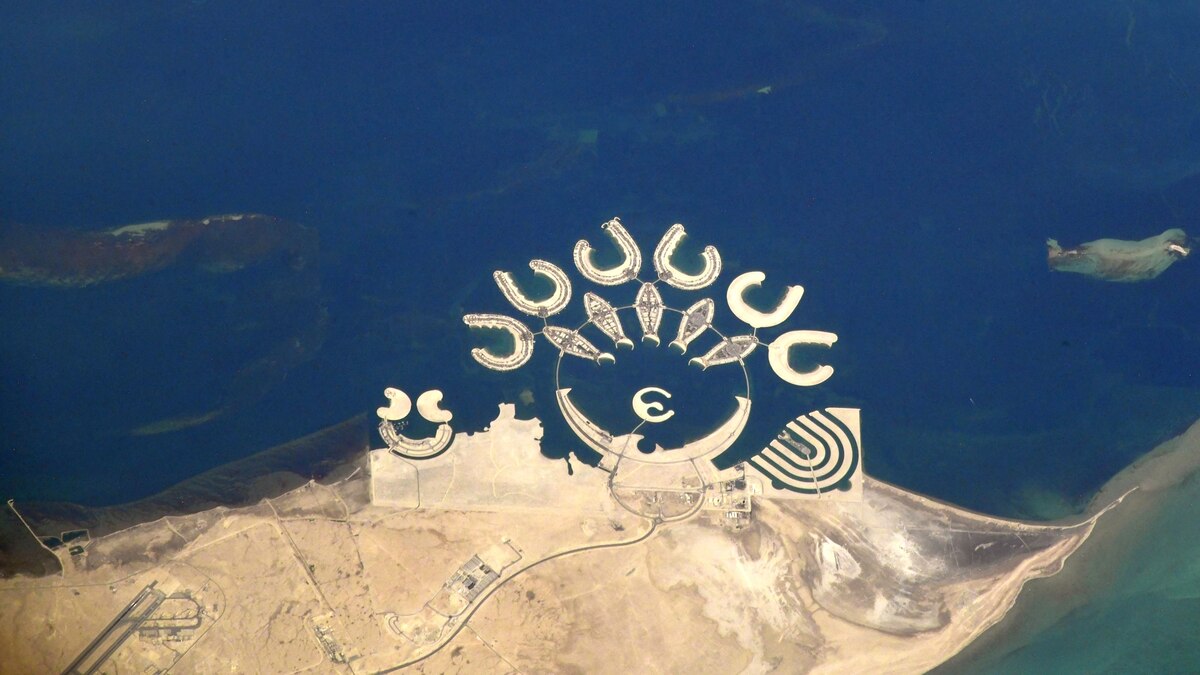Published August 31, 2022
9 min read
In the fishing village of Karrana on the north coast of Bahrain, 72-year-old Haji Saeed, one of the community’s oldest fishermen, wades through the low tide to check his traps.
Twenty years ago, the sea in front of him was home to an abundance of local fish, including hamour, a type of cod, and safi, a rabbitfish; he could easily catch over 100 kilograms (220 pounds) in a day.
Then, the Bahrain government built two artificial islands that altered the seabed, driving fish populations away from the shallow coastal waters.
When he returns to shore, Saeed has collected barely more than three kilos (6.6 pounds) of fish from his five traps, called hadrahs. The next day, he collects only three fish weighing just half a kilogram, slightly more than one pound.
“It’s been like this ever since the islands were made,” he says. “Before, we could fish all over the place … Now it is not giving us enough income.”
Fishing could become even more challenging as this Persian Gulf nation of 1.8 million people prepares to build five new artificial islands containing five new cities by the end of the decade. Combined, the islands will increase the landmass of this tiny nation by 60 percent. While government officials say the addition of new real estate is central to Bahrain’s economic development, building the islands also carries significant environmental costs in a part of the world where marine life is already struggling to adapt to climate change and survive.
“The Persian Gulf as a whole is fairly stressed, as it is salty and hot. Any extra stresses on (the species that live there) usually have more harmful impacts that they might elsewhere,” says Charles Sheppard, professor of marine sciences at the University of Warwick, who spent seven years researching coral reefs in the region.
Island-building across the Persian Gulf
Reclaiming land from the sea, the term of art for creating new islands by dredging the seafloor, is a familiar process in Bahrain. The country underwent various coastal alterations in 1963, and has since expanded from 258 square miles to more than 300 square miles in 2021—making Bahrain today slightly larger in area than Singapore.
The small archipelago already comprises more than 30 natural and artificial islands. Muharraq, the northernmost city-island in Bahrain, has been slowly expanding since the 1960s and is now four times its original size due to reclamation.
Although Bahrain’s coastal changes are motivated by its size, island-building has been practiced among Bahrain’s larger coastal neighbors for decades, often on a grander scale. Some are especially striking, such as Dubai’s Palm Jumeirah, which started construction in 1990 as a group of offshore islands resembling a stylized palm tree that are home to luxury villas and hotels. Saudi Arabia is also building Oxagon, the world’s largest free-floating structure, set to be an 18-square-mile industrial hub. Other projects have been more conventional, such as Qatar’s New Doha International Airport, built on reclaimed land in 2006.
Bahrain’s proposed five new islands are part of an ambitious $30 billion plan to recover from the pandemic and help shift Bahrain from an economy built on oil to one driven by private businesses, manufacturing, and tourism. In 2020, the World Bank said Bahrain’s economy shrank by 5 percent, mainly due to sharp declines in oil demand during the pandemic. This year, the International Monetary Fund estimates a projected growth of 3.3 percent.
“Bahrain is emerging from the pandemic with a bold ambition that looks beyond economic recovery to a more prosperous future,” said Sheikh Salman bin Khalifa Al Khalifa, minister of finance and national economy, at a briefing last November, where he described the blueprint for the government’s Economic Vision 2030.
Part of the $30 billion will fund 22 new development projects, including Bahrain’s first metro system and a new 15-mile causeway between Bahrain and Saudi Arabia.
More than doubling Bahrain’s land area is an ambitious task. The new islands are expected to add 180 square miles. The Bahrain Economic Development Board touts the five cities as sustainable; they are currently being designed to house an airport, luxury residences, and waterfront resorts, all while supposedly protecting natural habitats.
Environmental consequences of dredging
Scientists who have studied the history of the construction of artificial islands say there is reason to be concerned about the impacts of reclaiming land from the sea to build islands. Dredged material used to create reclaimed land often comes from shallow c

